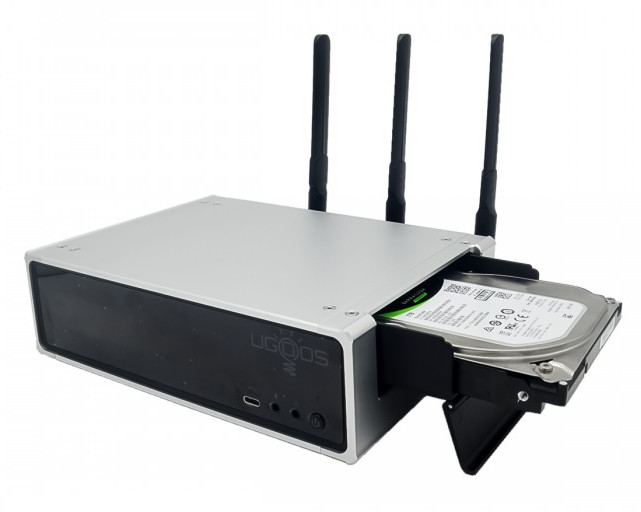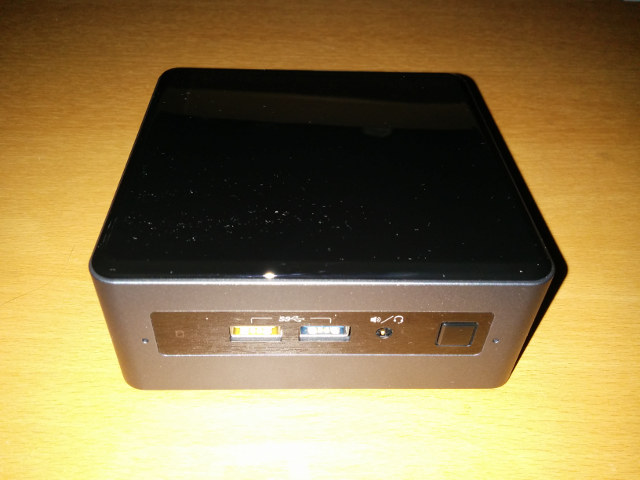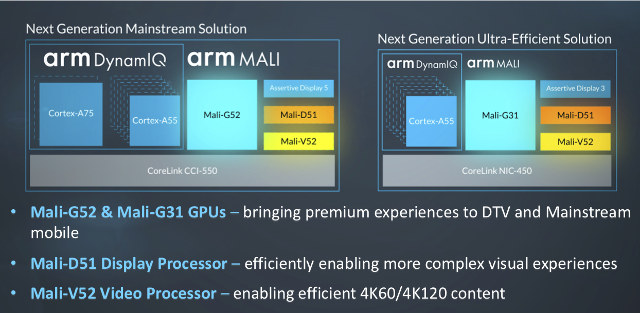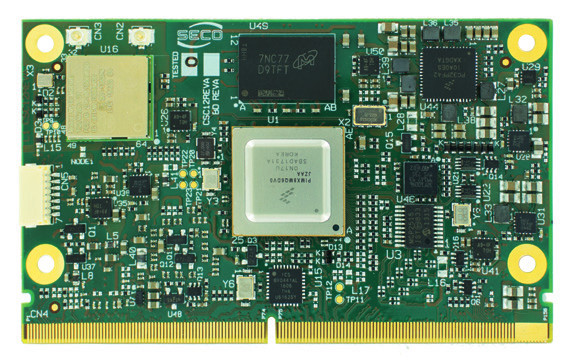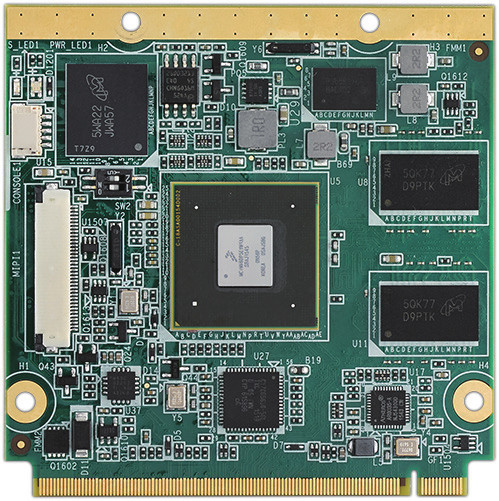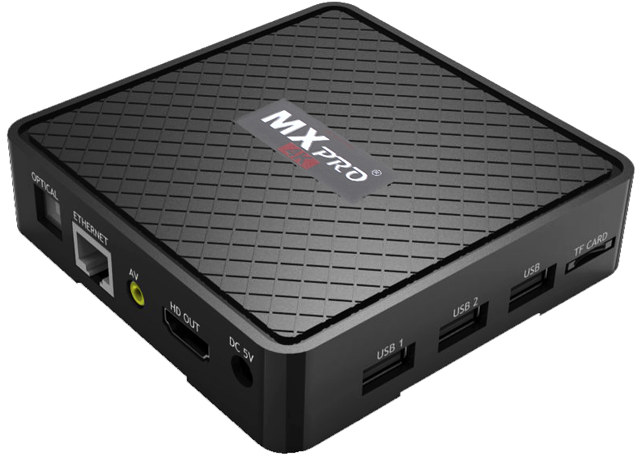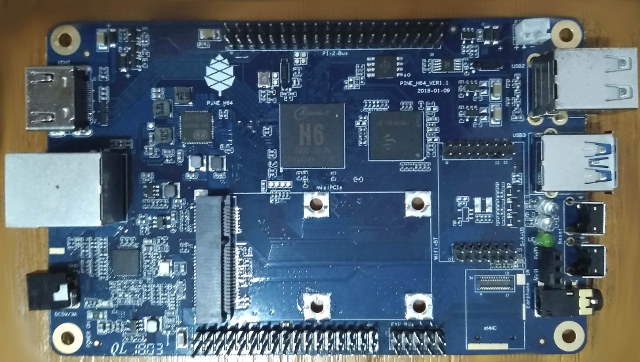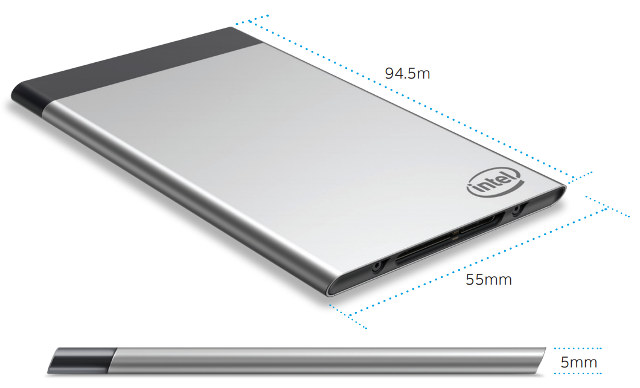It’s already possible to connect a 3.5″ SATA drive to Rockchip RK3399 based hardware with products like Vorke Z3 TV box exposing an external SATA connector, or development boards such as ODROID-N1, Orange Pi RK3399, or Firefly AIO-3399J. None of those solutions offers a neat way to store your hard drive, so you’d have cables and the drive exposed to dust, unless you make your own case. Ugoos UT5 Pro TV box offers an easier way to neatly connect a 3.5″ SATA drive since it includes an internal SATA slot. The device also features a USB 3.0 device port allowing user to connect the box directly to their computer to transfer files. Ugoos UT5 Pro specifications: SoC – Rockchip RK3399 dual core Cortex-A72 + quad core Cortex-A53, Arm Mali-860MP4 GPU with support for OpenGL ES1.1/2.0/3.0/3.1, OpenVG1.1, OpenCL, DX11 System Memory – 4GB DDRIII-2133 (2GB option) Storage 32GB eMMC flash (optional:16/32/64GB) […]
Intel NUC7CJYSAL “June Canyon” Gemini Lake NUC Mini PC Review with Windows 10 and Ubuntu
The hardware specification for mini PCs has recently evolved past the traditional fixed amount of memory and storage. Now mini PCs are shipping with SODIMM slots allowing RAM expansion and a variety of M.2 or SSD combos providing flexible storage options. Recent mini PCs are also coming to market with desktop processors rather than mobile processors because there has been a gradual acceptance of the necessary inclusion of a small internal fan. In doing so not only is this addressing the key limiting factors for mini PCs but it is also redefines the very definition of a mini PC. Until recently Intel NUCs (Next Unit of Computing) were seen as small-form-factor personal computers primarily because they consisted of the traditional motherboard with a processor, included removable RAM and storage and were enclosed in a case with an external power supply. They were also sold as kits meaning they were essentially […]
Arm Introduces Mali-G52 & Mali-G31 GPUs, Mali-D51 Display Processor, and Mali-V52 Video Processor for Mainstream Devices
Arm has just announced four multimedia Mali IP blocks to be found in SoC for mainstream devices: Mali-G52 GPU with 30% faster performance over Mali-G51, and 3.6x better machine learning performance Mali-G31 GPU that’s 20% smaller, and 20% more efficient than Mali-G51, supports OpenGL ES 3.2 and Vulkan APIs Mali-D51 display processor 30% power saving, 50% lower latency compared to Mali-DP650 Mali-V52 video processor supporting 4K60/4K120 content Mali-G52 GPU Arm may have introduced Project Trillium for object detection and machine learning a few weeks ago, but the solution is better suited to premium devices, so the company’s Mali-G52 bitfrost mainstream GPU aims to fill the void for mid-range devices with up to 3.6 times faster machine learning capability over Mali-G51. Based on the first illustration, Mali-G52 will probably be coupled with DynamIQ Cortex A75/A55 processors. Other benefits of the new GPU include 30% more performance density, and 15% better energy […]
SECO Unveils SM-C12 SMARC 2.0 Compliant i.MX8M Module, CSM-B79 SMARC 2.0 Carrier Board
We’ve already seen several computers-on-module/systems-on-module based on NXP i.MX8/8M processors, most of which use proprietary standards, but so far we’ve covered at least on Qseven 2.1 CoM with Advantech ROM-7720 powered by i.MX 8QuadMax SoC. SECO has now announced their SM-C12 module compliant with another SoM standard: SMARC 2.0. The system-on-module is powered by i.MX 8M dual or quad core processor, supports up to 4GB RAM, offers optional WiFi and Bluetooth connectivity, and plenty of I/Os thanks to the 314-pin MXM3 connector mandated by SMARC 2.0 specification. The module targets home automation, transportation, digital signage and vending machines, multimedia devices, and others applications requiring real-time processing and/or multimedia capabilities. SC-12 module specifications: SoC – NXP i.MX 8M dual or quad Arm Cortex-A53 processor with Cortex-M4 real-time core, Vivante GC7000Lite GPU with support for OpenGL ES 3.1, Open CL 1.2. OpenGL 3.0, Vulkan, DirectX System Memory – LPDDR4-3200 memory, 32-bit interface, […]
Advantech ROM-7720 is a Qseven 2.1 Compliant i.MX 8 QuadMax Computer-on-Module
Many solutions based on NXP i.MX8 processors are likely to be announced during Embedded World 2018 next week. We’ve already seen several NXP i.MX 8M Cortex A53 based modules such as Variscite DART-MX8M or Compulab CL-SOM-IMX8 systems-on-module, and more are coming. One of those will be Advantech ROM-7720 computer-on-module (CoM) featuring the top of the line NXP i.MX 8 QuadMax Cortex A72/A53 processor and following QSeven 2.1 specifications / form factor. Advantech ROM-7720 CoM specifications: SoC – NXP i.MX 8QuadMax processor with 2x Cortex A72 cores @ up to 1.6GHz, 4x Cortex A53 cores, 2x Cortex-M4F real-time cores, a HiFi 4 DSP, and 2x Vivante GC7000XSVX GPUs System Memory – 2GB LPDDR4 @ 1600 MHz (optional 4GB RAM) Storage – 8 GB eMMC Flash for OS, 64 MB Quad SPI Flash for boot loader Video Output / Display I/F 2x 24-bit LVDS, 1366 x 768 for 1ch; 1920 x 1080 […]
MX Pro 4K is an Android 7.0 TV Box powered by Allwinner H5 Processor
We’ve already seen Allwinner H5 processor in several development boards such as NanoPi NEO2, Orange Pi Zero Plus, or Libre Computer Tritium 2G among other. But while the processor has been designed for 4K OTT TV boxes, I had not seen any TV box based on the processor so far. MX Pro 4K, not to be confused by MXQ Pro 4K, changes that, as it features the quad core Cortex A53 processor combined with 1GB RAM, 8GB storage, and the usual HDMI, Ethernet, USB ports you’d expect from a TV box. MX Pro 4K specifications: SoC – Allwinner H5 quad core Cortex A53 processor with hexa-core Mali-450MP4 GPU System Memory – 1 GB DDR3 Storage – 8 GB eMMC flash (options: 4GB, 16GB, 32GB), micro SD card slot Video Output – HDMI 1.4b up to 4K @ 30 Hz, AV port (composite) Audio Output – HDMI, AV (stereo audio), and […]
Pine H64 Development Board Features Allwinner H6 processor, Gigabit Ethernet, USB 3.0 and PCIe for $26 and Up
As expected, Pine64 has now launched Pine H64 development board, powered by Allwinner H6 quad core processor, and contrary to Orange Pi H6 boards, it exposes both Gigabit Ethernet, and a USB 3.0 port, which should please people wanting fast storage combined with Gigabit Ethernet. The board comes in three variants with 1, 2 or 3GB of memory, with all also equipped with a mini PCIe interface, and various I/O headers. Pine H64 specifications: SoC – Allwinner H6 quad core Cortex A53 processor with Arm Mali-T720MP2 GPU System Memory – 1, 2 or 3GB LPDDR3 PC-1600 RAM Storage – 128 Mbit SPI flash, micro SD card slot, and eMMC flash module connector (all bootable) Video Output – HDMI 2.0a up to 4K @ 60 Hz Audio – HDMI audio output, Video Decoding – 10-bit H.265 up to 4K @ 60 fps, VP9 and H.264 up to 4K @ 30 fps […]
Intel Compute Cards Review – Windows 10 and Ubuntu 17.04 on CD1C64GK, CD1P64GK and CD1M3128MK
The Intel Compute Stick revolutionized the mini PC market through the introduction of x86 based processors making Windows available as an OS option. However, for Intel the biggest target market turned out to be business rather than consumer with digital signage being a key user. As a result Intel have responded with the introduction of the Intel Compute Card. So far they have released four versions of card: and they they differ from compute sticks by no longer being standalone mini PCs but dependent on a dock or host device. The card itself is relatively small with a footprint slightly larger than a standard credit card: and is distinguished by the back being printed with details about the card including the model: The lack of emphasis on the consumer market is also evident in the rather unobtrusive plain packaging: On the end that inserts into the dock or host device […]


